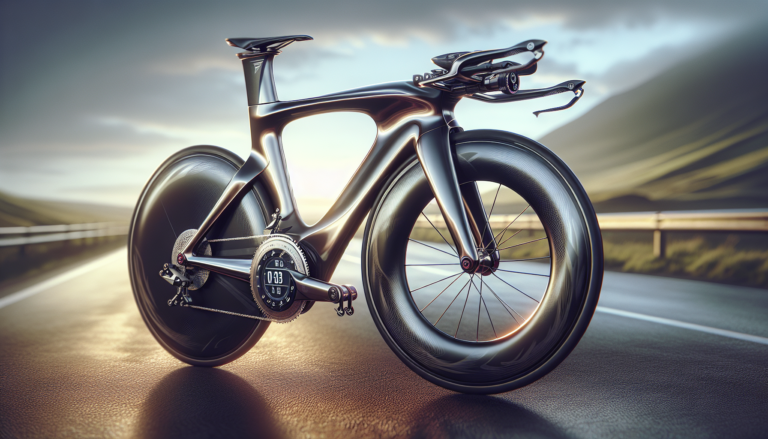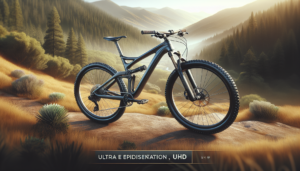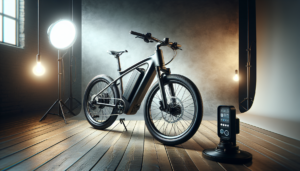Cycling is a popular mode of transportation and recreation enjoyed by millions worldwide. Whether you’re a casual rider or an experienced cyclist, you might wonder just how fast you can go on a bike. In this article, we’ll explore the average and maximum speeds achievable by cyclists, as well as the factors that influence those speeds.
Introduction to Cycling Speeds
Cycling speeds vary greatly depending on a variety of factors, including the type of bike, the terrain, the rider’s fitness level, and weather conditions. While some cyclists may be content with a leisurely pace, others strive to push their limits and reach maximum speeds.
Understanding the range of possible speeds can help you set realistic goals, whether you’re commuting to work or training for a race. Let’s dive into the details of average cycling speeds and the maximum speeds achieved by some of the world’s most skilled cyclists.
Understanding Average Cycling Speeds
For casual cyclists, the average speed on flat terrain typically falls between 10 and 15 miles per hour (16-24 km/h). This pace allows for a comfortable ride while still covering a decent distance.
Experienced cyclists who ride regularly can expect to maintain speeds of 15 to 20 mph (24-32 km/h) on flat ground. These riders have developed a higher level of fitness and technique, enabling them to sustain a faster pace for longer periods.
Maximum Speeds Achieved by Cyclists
While average speeds give us a general idea of cycling performance, it’s the maximum speeds that truly showcase the potential of human-powered transportation. Professional cyclists have been known to reach incredible velocities, particularly during races and record attempts.
On steep descents, professional cyclists can achieve speeds exceeding 60 mph (96 km/h). These breathtaking feats are made possible by a combination of gravity, aerodynamics, and the rider’s skill in navigating the terrain.
In terms of speed records, the current world record for the fastest speed on a bicycle is held by Denise Mueller-Korenek, who reached an astonishing 183.93 mph (296.01 km/h) in 2018 using a custom-designed bike and drafting behind a vehicle.
Factors Affecting Cycling Speed
Several key factors play a role in determining how fast you can go on a bike. Understanding these variables can help you optimize your performance and set realistic expectations for your rides.
Impact of Terrain on Speed
The type of terrain you’re cycling on has a significant impact on your speed. Riding on smooth, flat tarmac allows for higher speeds compared to rough, uneven surfaces like gravel or dirt trails.
When cycling on hills or inclines, your speed will naturally decrease as you work against gravity. The steepness of the gradient determines how much effort is required to maintain a given speed. On the other hand, descending hills allows you to pick up speed quickly, sometimes reaching velocities that exceed your normal flat-ground pace.
Role of Fitness and Experience
Your fitness level and cycling experience are crucial factors in determining your speed. As you become more conditioned through regular training, your body adapts to the demands of cycling, allowing you to generate more power and maintain higher speeds for longer durations.
Experienced cyclists have honed their technique, which contributes to increased efficiency and speed. Proper body positioning, pedaling form, and gear selection all play a role in optimizing performance.
Influence of Bike Type and Equipment
The type of bike you ride can also affect your speed. Road bikes are designed for speed and efficiency, with lightweight frames, narrow tires, and aerodynamic positioning. These bikes are ideal for riding on pavement and can help you achieve higher speeds compared to other bike types.
Mountain bikes, on the other hand, are built for stability and traction on off-road trails. While they may not be as fast on smooth surfaces, they excel in navigating rough terrain and can still achieve respectable speeds with the right equipment and rider skill.
Weather Conditions and Their Effects
Weather conditions can significantly impact your cycling speed. Wind resistance is a major factor, as headwinds can slow you down while tailwinds can give you a boost. Temperature also plays a role, as extreme heat or cold can affect your body’s performance and energy levels.
Rain and wet conditions can reduce traction and visibility, making it more challenging to maintain high speeds safely. In these situations, it’s essential to adjust your speed accordingly and exercise caution to avoid accidents.
Safety Considerations at High Speeds
While the thrill of riding at high speeds can be exhilarating, it’s crucial to prioritize safety. As you reach higher velocities, the risks associated with cycling increase, requiring extra precautions and awareness.
Maintaining Stability and Control
At high speeds, stability becomes a key concern. Factors such as wheel strength and spoke durability come into play, as the forces exerted on the bike increase with speed. It’s essential to ensure that your bike is well-maintained and capable of handling the stresses of high-speed riding.
Maintaining control is also critical when cycling at high speeds. Smooth, predictable movements and precise steering are necessary to navigate turns and obstacles safely. Practicing proper technique and gradually building up speed can help you develop the skills needed for high-speed cycling.
Protective Gear and Safety Measures
Wearing appropriate protective gear is essential when cycling at high speeds. A well-fitted helmet is non-negotiable, as it can greatly reduce the risk of head injuries in the event of a crash. Eye protection, such as goggles or glasses, can shield your eyes from wind, debris, and insects.
Other safety measures include using lights and reflective clothing to increase visibility, particularly during low-light conditions. It’s also important to follow traffic laws, use designated bike lanes when available, and communicate your intentions clearly to other road users.
Exploring Terminal Velocity in Cycling
When discussing high-speed cycling, the concept of terminal velocity often comes up. Terminal velocity refers to the maximum speed an object can reach while falling through the air, taking into account the forces of gravity and air resistance.
The Concept of Terminal Velocity
In the context of cycling, terminal velocity represents the theoretical maximum speed a cyclist can achieve under ideal conditions, such as riding down a steep hill with minimal wind resistance. However, in practice, reaching true terminal velocity on a bicycle is extremely difficult, if not impossible, due to the limitations of human power output and the drag force exerted by the air.
Studies have shown that the terminal velocity for a cyclist in a prone position is around 200 km/h (124 mph). However, this speed is purely theoretical and would require a rider to be in a vacuum or to have an unrealistic power output.
Factors Influencing Terminal Velocity
Several factors influence the terminal velocity a cyclist can achieve. The primary forces at play are gravity and air resistance. As a cyclist descends a hill, gravity accelerates them downward, while air resistance acts in the opposite direction, creating drag force.
The balance between these forces determines the maximum speed a cyclist can reach. Factors such as the rider’s mass, frontal area, and aerodynamic profile all contribute to the magnitude of the drag force experienced.
While it’s theoretically possible to reach incredibly high speeds, the practical limitations of human power output and the risks associated with high-speed cycling make achieving true terminal velocity on a bicycle an unrealistic goal.
Tips for Increasing Your Cycling Speed
If you’re looking to improve your cycling speed, there are several strategies you can employ. By focusing on training, technique, and equipment, you can gradually increase your pace and achieve faster times on the road or trail.
Effective Training Techniques
Incorporating targeted training sessions into your cycling routine can help you build the strength, endurance, and power needed for faster riding. Interval training, which involves alternating between high-intensity efforts and recovery periods, is an effective way to improve your speed and cardiovascular fitness.
Longer, steady-state rides at a moderate pace can also help develop your endurance and ability to maintain higher speeds for extended periods. Gradually increasing the duration and intensity of your rides over time will lead to improvements in your overall cycling performance.
Optimizing Your Cycling Technique
Proper cycling technique can greatly influence your speed and efficiency on the bike. Focus on maintaining a relaxed, yet powerful pedal stroke, engaging your core muscles for stability, and keeping your upper body still to minimize energy waste.
Paying attention to your aerodynamics can also help you slice through the air more efficiently. Adopting a lower, more streamlined position on the bike can reduce drag and allow you to maintain higher speeds with less effort.
Practicing proper cornering techniques, such as leaning into turns and maintaining a smooth line, can help you carry speed through curves and maintain momentum.
Upgrading Your Equipment
While training and technique are essential, the right equipment can also contribute to faster cycling speeds. Investing in a lightweight, well-fitted bike can make a noticeable difference in your performance, especially on climbs and accelerations.
Upgrading to more aerodynamic wheels, tires, and components can help reduce drag and improve your overall speed. Additionally, wearing form-fitting, moisture-wicking clothing can enhance your comfort and aerodynamics on the bike.
It’s important to remember that equipment upgrades should be paired with proper training and technique to maximize their benefits. A fast bike alone won’t make you a faster cyclist without the fitness and skills to back it up.
Conclusion
Discovering how fast you can go on a bike is a fascinating exploration of human potential and the physics of cycling. From average speeds to record-breaking feats, cyclists continue to push the boundaries of what’s possible on two wheels.
Understanding the factors that influence cycling speed, such as terrain, fitness, experience, bike type, and weather conditions, can help you set realistic goals and optimize your performance. By focusing on training, technique, and equipment, you can work towards increasing your own cycling speeds and enjoying the thrill of faster rides.
However, it’s crucial to prioritize safety at all times, especially when cycling at high speeds. Wearing protective gear, maintaining control, and following traffic laws are essential for minimizing risks and ensuring a safe and enjoyable riding experience.
Whether you’re a casual cyclist or a competitive racer, the quest for speed is an exciting aspect of the sport. By continually challenging yourself, learning from others, and staying dedicated to improvement, you can unlock your own potential and discover just how fast you can go on a bike.






